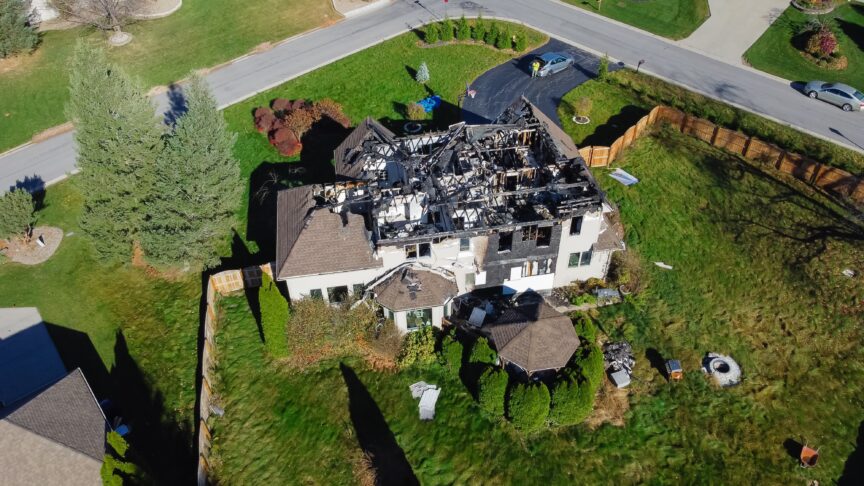In this month’s members-only webinar, The Institute invited their preferred partner, Hub Insurance, to provide an overview of the current changes in home insurance and the reasons behind them.
Carrie Ousley, CIC, CISR of Hub Private Client, who has been working in the insurance industry for over 36 years, shared her insights. The topics covered included:
- Catastrophic Events: Weather-related and more
- Our Greatest Asset: Our Homes
- Flood Insurance: National FEMA 2.0 Changes and Private Flood
- Carrier Restrictions and Recommendations
Catastrophic Events
Carrie shared some startling information about major events in the last five years, their impact on insurance claims, and why the industry is having to pivot, making changes to home insurance to support homeowners.
Extreme weather—such as tropical storms, hurricanes, hailstorms, and even polar vortexes—has steadily increased in both number and intensity. Losses are no longer in the millions, they are now in the billions. Global insurance claims are now totaling $64 billion, 85% of which were from U.S. homeowners.
Records are being broken for all the wrong reasons. For instance, hailstorm events in the U.S. in 2024 have already surpassed 2023 by 216%. Pipe bursts and private flood claims are skyrocketing because polar vortexes are occurring in locations where homes are ill-equipped to handle sub-zero temperatures. Wildfire incidents are increasing each year, with many states in the U.S. reporting high-risk activity near homes.
Our Greatest Assets: Our Homes
Carrie explained how she focuses on why agents need to understand the new changes to home insurance restrictions and guidelines. These have the potential to affect both property purchases and future insurance costs.
All of these events are influencing how the insurance market will offer policies in the future, including new requirements such as water shut-off valves and tree clearing.
She emphasized the importance of agents understanding the difference between Admitted and Non-Admitted insurance policies, and which companies can provide homeowner coverage, especially since some companies are no longer offering policies to new buyers in high-risk areas.
Highlighted are the challenges of insuring properties in the following categories:
- High-risk areas
- Second Homes
- Renovations
- Rental properties
Flood Insurance: National FEMA 2.0 Changes and Private Flood
Since October 2021, flood insurance has changed, with another update set for October 1, 2024.
FEMA now provides satellite imagery of areas that have flooded or are likely to flood, so rates will be assessed on a case-by-case basis. They will consider factors such as the water body type (lake, river, ocean), proximity to water, location of the bottom floor, and elevation.
She stressed the importance of understanding deductibles and how the new “glide path” policy is being applied to current homeowners. It’s equally important to advise clients to assume these “glide path” policies if they are looking to purchase a property.
One of Carrie’s main recommendations is not just to implement items such as new piping and water shut-off valves, but to carefully consider whether filing a claim for a smaller flood loss is in the client’s best interest, especially if they are looking to sell and already had claims due to water damage.
Carrier Restrictions and Recommendations
Insurance carriers are trying to keep up with the increasing number of claims. Their policies are starting to impose restrictions through deductibles and caps on how much is paid out.
Homeowners need to decide whether they want the added cost of full replacement or to take on a little risk. For instance, if they have recently updated their plumbing, added safety systems, or replaced their roof.
Insurance companies are now adding separate deductibles for specific events, such as wildfires and hailstorms, separating them from the general peril deductible.
It is also critical, especially for higher-risk properties, to understand that insurance companies often state that they are “at capacity,” meaning they are not taking on new clients.
As a result, Carrie advises that non-admitted insurance policies are likely to be the way forward for luxury homes.
In Conclusion
Home insurance is changing and agents need to be prepared. As a Member of The Institute for Luxury Home Marketing, you can view this webinar to learn more about these key changes, restrictions, and new requirements.
View additional insights from The Institute
Stay ahead with The Institute
Want more guidance on how to grow your luxury real estate practice and develop your skills when working with the affluent? Learn more about the Institute’s training options here.
Becoming a Member of The Institute is a valuable investment in your future success as a luxury real estate professional. Learn how to succeed in the luxury market through training, certification, advanced learning experiences. Connect to a network of successful real estate professionals throughout the United States and Canada.
Our Certified Luxury Home Marketing Specialist™ (CLHMS™) designation is recognized throughout the globe. Take advantage of the training offered and the information you’ll receive through The Institute’s Local Luxury Market Reports, published monthly only for Members.

